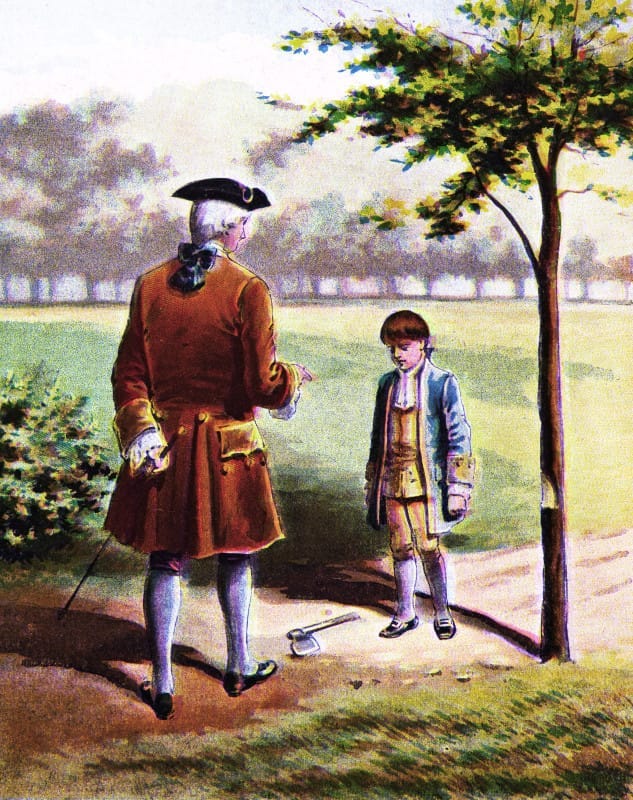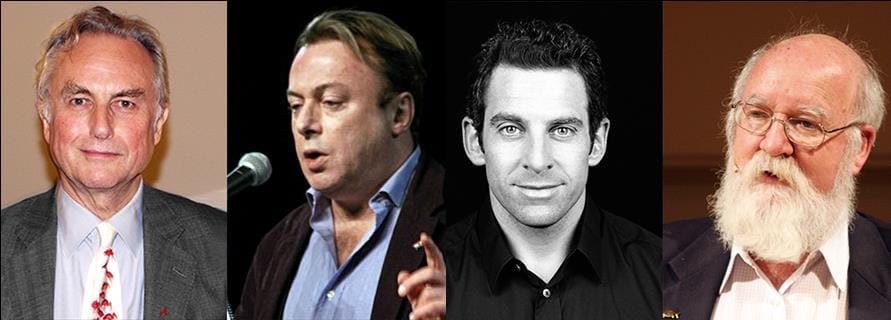If you’d asked me at two particular phases of my life, and my maturity, what my favorite book was, I would have told you either Life of Pi or American Psycho. You might think that’s a hell of a swing in literary taste, but then again, both books have basically the same theme. Also, it kinda describes what’s wrong with all of us.
Let’s talk about that, but be warned that this is all spoilers. It doesn’t really matter whether we’re talking about the books or the film adaptations because the movies both follow the books pretty closely. If you wanted to run off and watch those first then you could call it the weirdest double feature since Barbenheimer.
Anyway, Life of Pi is a fantasy adventure that doesn’t have any elements of that genre for the first full third of it. The protagonist, a young Indian boy named Pi Patel, is the son of a zookeeper, and the entire first act focuses on, well, the life of Pi. His childhood in India, his schooling, and his explorations of philosophy and faith as he learns about the three major religions—Hinduism, Islam, and Christianity.
But then just as you think you know what you’re getting into, the second act arrives. Pi’s family has sold the zoo and they’re transporting all the animals to Canada by ship. The closing sentence in Part 1 is “This story has a happy ending.” That’s important.
The opening sentence of Part 2 is, of course, “The ship sank.” Pi is marooned on a lifeboat with no human companions. We don’t know the fate of his family. On board with him are a hyena, a zebra, an orangutan, and a 450-pound Bengal tiger. In the ensuing chapters the hyena kills and devours the zebra and the orangutan, before itself being eaten by the tiger, and the bulk of the rest of the book is spent on Pi’s efforts to tame and domesticate a tiger, while stranded with it on the ocean, so that it will come to trust him and thus spare his life.
American Psycho is a horror comedy about yuppies, set in 1989 and centred on an investment banker named Patrick who narrates the story in manic first person and prattles on for entire chapters about 80s music. He’s also a sadistic serial killer who brutally murders strangers in the most gruesome and specific violence I’ve ever seen described in fiction. In Australia, libraries and bookstores are, by law, only permitted to sell it from behind the counter as though it’s a prescription drug and it comes in plain packaging with advisory warnings like cigarettes.
So, you see how these are pretty much the same book.
I knew nothing about either of these stories before going into them (Life of Pi, I read the book before seeing the movie; American Psycho, the other way around) and I’m very glad about that because that’s how they’re best consumed—going in fully blind.
Last chance if you want to watch those movies before we continue. Or read the books, sure, but by the time you do that you’re going to forget what we were talking about.
As Pi drifts across the Pacific, learning to catch fish for both food and tiger-taming, the details of his adventure grow gradually stranger. The conceit of taming a tiger on a lifeboat is fantastical enough, but in time things get crazy enough that you’re not even sure what genre this is anymore. He eventually winds up on a mysterious island populated only by hundreds of thousands of tree-dwelling meerkats, but soon figures out that it’s not really an island at all, but a giant free-floating carnivorous organism. The novel that starts off as grounded literary fiction starts to break down into fantasy until it ultimately takes a detour into a Stephen King short story.
American Psycho takes a similar descent into insanity. The entire first third of it consists of a stream (or firehose) of consciousness describing Patrick’s upper class yuppie lifestyle. (I blame Bret Easton Ellis for my own addiction to very long sentences.) Patrick goes to work, he goes to restaurants, he has drawn-out misogynistic conversations over drinks with his colleagues, he works out, he visits the laundromat, he has boring dates with his fiancé who he can’t stand. The chapters have titles like “Business Meeting,” and “Tuesday.” Then he brutally tortures and murders a homeless man and his dog in nauseating detail. Then he talks about Phil Collins, then he talks about Yale.
The episodes of graphic violence become more frequent as the story progresses, until ultimately it’s just a frenzy of senseless murder and mayhem. In the movie there’s a scene toward the end where Patrick, played perfectly by Christian Bale, is cornered in the street by half a dozen police—armed only with a single pistol, he manages to kill all of them, and even blow up their squad cars.
Bale, right then, has a brilliant acting moment where he looks down at his own gun in confusion.
This is a gentle invitation to the audience to question whether things are happening the way you’re being told they’re happening.
An astonishing number of people think that Amber Heard squatted down and took a shit on Johnny Depp’s bed. I know that seems like a strange aside. This is probably the most absurd claim made by Depp against his former wife in their tastelessly televised 2022 defamation trial based on a photo he says that he saw as corroborated by his good buddy. This trial also included such plausible anecdotes as a flying vodka bottle that severed one of his fingers but it was reattached and it's all better now. The burden of evidence about this ludicrous accusation is so heavy on Depp, here, and it was never anywhere close to met, but nevertheless it’s as though everyone collectively decided to lock this in as a historically verified event, bypassing the need for evidence in favor of “wow, what a crazy bitch.”
Life of Pi and American Psycho are both prominent examples of what, in literary studies, is called an “unreliable narrator.” Fiction, of course, is already untrue. The unreliable narrator brings the story another layer of abstraction away from truth, because it layers another fiction onto the fiction. In a way, it ridicules the reader for trying to find truth in fiction, or anywhere.
Here’s a difficult pill to swallow, and one that explains a lot about what’s wrong and frustrating with the world: We are all unreliable narrators. All of us, through our whole lives, are telling a story, to ourselves, to each other. It’s a story that resembles the truth but it’s stitched together with lies and hallucinations.
I’m someone who believes that objective truths exist but I’m also aware, philosophically, about how difficult it is to touch them while locked inside our meat computer. Thousands of years of epistemology and phenomenology have struggled with this. We are not logic machines and we do not seek objective truth. It is not what we evolved to do and the desire for it is a psychological aberration that requires suppressing our instincts. Long before we studied the history of our civilization, of the natural world, and of material science, we explained all of that stuff with myth and legend. That was just how things were done. We saw a gap in our knowledge, and we made up a story to explain it, and the most entertaining story became the official explanation.
We based our history and science on what was most interesting or satisfying or desirable, and we called that “truth.” And we still do it.
The history that most people accept or think they know is still littered with myths and legends scattered through true accounts. You might have heard, for example, a popular piece of trivia that the most prolific serial killer in history was a Hungarian noblewoman named Elizabeth Bathory, who killed over 600 people. In actual fact there is no evidence she ever killed anyone, let alone shat in someone’s bed. Given time and distance, our knowledge of history blurs and fragments and fades and distorts into so much pop fiction and fascinating mythology.
We don’t have to wait for the distance of history to become distorted, though, because we engage in distortions today, and about things way more important than celebrities slandering each other for spectacle. I wrote a whole article about how political pseudo-intellectual muckraker Christopher Rufo literally manufactures the present, openly inventing lies and fictions that spread out and infect the public discourse, generate popular support for the far right, and inform authoritarian populist policy. He bases his stories not on truth but on utility. What story, if propagated, will result in the preferred outcome for him? We know he does because he says he does.
But people like me can write pieces like this every day forever and the mainstream media and popular opinion alike will still prefer his manufactured reality because he tells a good story. There is a gap in people’s knowledge about why their lives are full of suffering. I have a story about that, but so does Christopher Rufo. His story involves sinister forces replacing white culture with black savages who barbecue household pets. His story is more sensational and entertaining, it better fits what people prefer to be true, and in that way it just becomes true.
At the end of Life of Pi, after he is rescued, a pair of incredulous investigators completely doubt his story and urge him to tell them the truth, but Pi doesn’t own up to having imagined any part of it. He doesn’t really acknowledge a difference between fact or fiction, either: They are both stories. Every narrative is a story. Rather than using “truth” as a value unit, he asks the investigators if the story was not to their taste and whether they would prefer a different story.
Then, he tells a different story. Let’s say, there weren’t any animals on the lifeboat. Let’s say, instead of a hyena, there was the ship’s vicious, hideous cook. Let’s say, instead of a zebra, there was a young sailor. Instead of an orangutan, let’s say it was Pi’s mother.
This story is much closer to one of the violent chapters in American Psycho. The author doesn’t let the whimsical fantasy tone of the bulk of the book hold him back from the explicit details of what happens when the cook butchers and eats the other people on the boat and how it is Pi himself, not a tiger, who must kill the brute to avenge the innocent.
Pi doesn’t say this is the true story, he just asks which story they think is better. In all honesty, they pick the one with the animals. This story, as anticipated at the end of part one, has a happy ending.
Very fittingly, Life of Pi was published in September 2001. I went to a seminar by Yann Martel, somewhere around 2007 or 8, in which he talked about the themes of this book and how they were reaffirmed by western civilization’s reaction to 9/11. The popular view was that storytelling had done this. That it was religious fanaticism and an obsession with fiction—dogma—that had boiled over into catastrophe. Sales of fiction actually dropped after 9/11, and Martel chalks this up to the idea that secular society collectively sobered up and decided it was time to put away childish things like religion and spirituality and even fiction as a whole and embrace rationalism. Martel is correct here—this was the origin of the so-called New Atheism movement.
But we didn’t really grow up as much as we thought we did. Xenophobia and Islamophobia shot up in response, and the fictions that sold the Iraq War were built on fictions we told ourselves about foreigners and narratives of patriotism. Every story is a story.
We all tell ourselves that we prefer to seek the truth but that’s, ironically, a lie. We prefer stories. We have to fight against our own nature to seek truth. The entire basis of conspiracy culture that people prefer good stories, but we all like to think we are seeking truth, which causes a very unpleasant dysphoria when the evidence doesn’t match the best story.
I used to work as a fact-checker so I know the visceral hatred that many people have for fact-checkers. Facts, when they run contrary to the best story, are violently opposed as propaganda. Free speech advocates will ironically lobby for and celebrate the censorship of academics who study misinformation as a broad phenomenon. More than ever, right-wing populists understand how little the general public cares about verifiable facts and are more brazen about using storytelling as a post hoc narrative to ease the passage of doing what they intend to do for their own reasons.
One may note the ongoing saga of Kilmar Abrego Garcia, a legal resident of the United States, who was deported to an El Salvador prison camp for terrorists in what the Trump administration initially called an administrative error. Later, it was claimed it was because he was associated with the MS-13 gang. Later, it was said that he’s a leader of the MS-13 gang. Recently, the MS-13 allegations have disappeared in favor of new accusations that he’s a human trafficker. Every story is a story, every story denies that the previous story was so passionately insisted upon. They merely ask, which is your preferred story?
Life of Pi’s unreliable narrator never admits the truth of either of his stories but it’s heavily textually implied that the cannibalism-at-sea story is the thing that really happened, and the problem with truth is that it often fucking sucks ass. American Psycho is much more vague. Ellis doesn’t give you a nudge and wink the way Martel does. There’s no “truth is relative and a construct of preferences but between you and me here’s what really happened” moment in this story. You don’t ultimately find out whether all, some, or any of the violence described actually happens. Unlike Pi Patel, Patrick Bateman has no self-awareness of the sociological relativity of truth. He’s not a conscious liar, he lies to himself and believes his lies. He consistently claims to himself and the reader that his only desire is conformity, but his fantasies, real or imagined, speak to the fact that he desperately wants to live in a more interesting story. This desperation manifests as ludicrous violence.
There’s virtue in seeking truth, and in case true objectivity is unachievable, then at least to get close to a common ground. I feel it’s important for those of us who resist the populist right to understand that they have already recognized our human preference for the better story over the one that cuts closest to the truth, and it has become a central component of their strategy. We don’t have to be right all the time—that’s not possible. The key is to recognize that they’re not even trying to be.
I'm writing a whole book about how reactionary geeks in the internet era tumbled down the fascism pipeline and set about smashing up the world out of hubris and spite. The working title is How Geeks Ate the World and I’m going to be dropping parts of the draft into this very newsletter as the project comes along—but only for paid subscribers. So if you want to read along in real time, please consider subscribing. Otherwise I’ll be keeping you in the loop. Check it out here:
You Are Your Memories and the Present Doesn't Exist
Recently I went into hospital for a routine endoscopy, allegedly.




















This reminds me of a related concern. It seems to me that there is likely a lot of truth in what I understand to be the principle of Modern Monetary Theory ie that governments of countries which have their own currency can effectively pay for all goods and services produced in that country without causing inflation - ie resources are not limited, it's all just policy choices. But I am amazed how this happy story ('we've won the lottery, we're just too stupid to realise it!') fails to attract conservatives, who strongly reject the idea that we could have governments that actually help everyone. Is it really all about cruelty?
I've been wanting to read American Psycho for a while and I think next time I'm at the library I'll grab (or inter-library loan request) it.